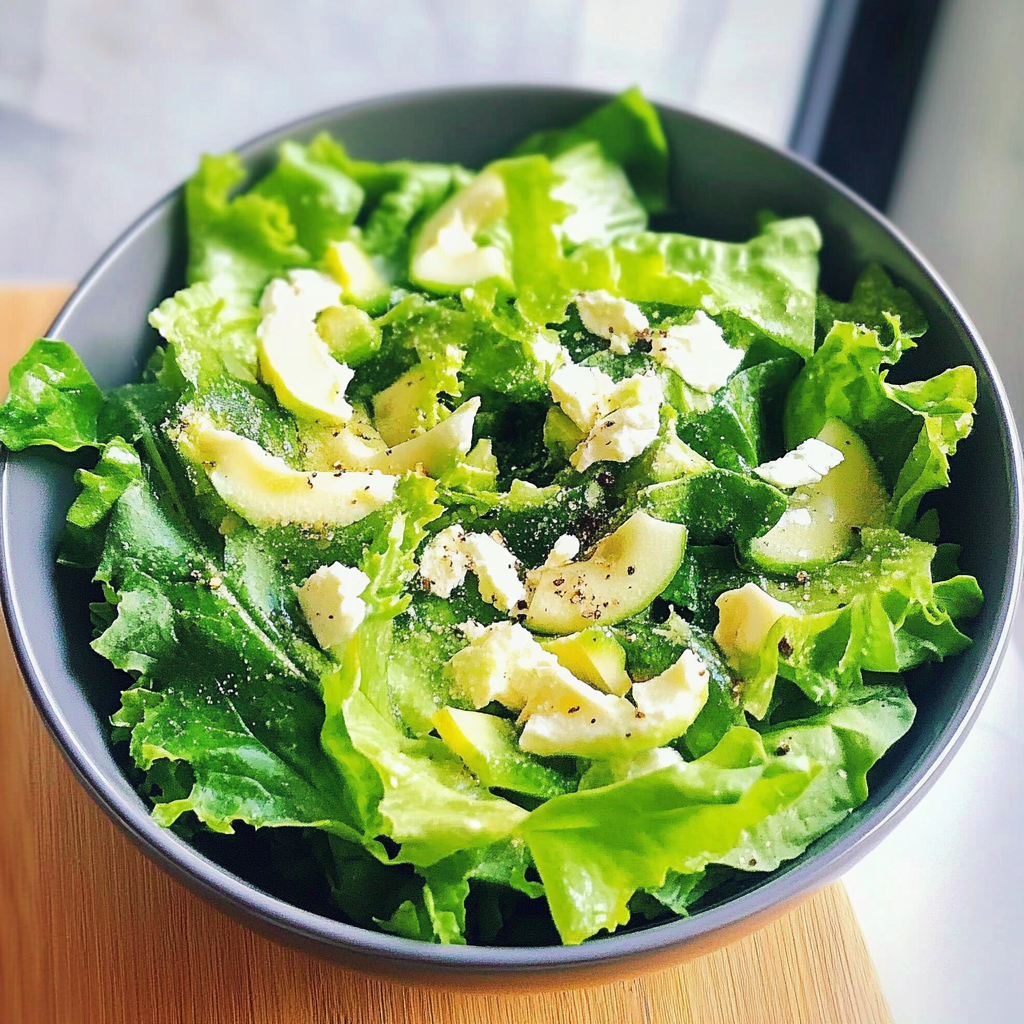Introduction to Green Salads
A fresh, vibrant green salad is one of the simplest and healthiest dishes you can add to your diet. Made primarily with leafy greens like spinach, kale, or romaine lettuce, these salads are rich in nutrients, low in calories, and endlessly customizable. Whether you’re preparing a quick weekday lunch or a gourmet dinner side, green salads offer the perfect base for creativity and nourishment.
What sets a green salad apart is its versatility — it can be as simple as mixed greens with a homemade vinaigrette, or a hearty meal topped with proteins, fruits, nuts, and grains. Not only do they support weight management and digestive health, but they also deliver essential vitamins like A, C, and K.
In this guide, we’ll explore how to build the perfect green salad, spotlight delicious recipes, and help you make the most out of every crunchy, refreshing bite.
From understanding the health benefits of leafy greens to learning how to make the perfect homemade vinaigrette, we’ll cover it all.Want to double up on protein and flavor? Pair it with these feta and cranberry chickpeas for a heartier bite.
What Is a Green Salad?
A green salad is a dish primarily composed of leafy greens such as spinach, romaine lettuce, arugula, or kale, often enhanced with colorful veggies, fruits, nuts, cheese, and dressings. Its beauty lies in its versatility — a simple bowl of greens can be transformed into a flavorful, nutritious masterpiece with just a few creative add-ins.
Not only are they easy to assemble, but green salads are also incredibly beneficial for your overall health. Studies have shown that regular consumption of leafy greens can support heart health, digestion, and weight management. Learn more about the benefits of leafy greens from Harvard’s School of Public Health.
🌿 Why Are Green Salads So Good for You?
It’s not just about the crunch — green salads deliver a powerful nutritional punch. Here’s why you should make them a regular part of your meals:
- High in fiber – Supports digestive health and promotes fullness
- Packed with antioxidants – Reduces inflammation and supports immune health
- Loaded with vitamins and minerals – Including vitamin A, C, K, folate, and iron
- Low in calories – Ideal for weight-conscious diets
The dressing you use can also make a huge difference. Skip the store-bought bottles and try a healthier approach. This healthy salad dressing guide by EatingWell offers easy recipes that balance flavor and nutrition beautifully.
Core Ingredients for a Delicious Green Salad
The best green salads have a balance of taste, texture, and color. Here’s how to build yours:
Base Greens
Choose 1–2 varieties for a rich flavor and nutrient combo:
- Spinach (mild, iron-rich)
- Romaine (crunchy and refreshing)
- Arugula (peppery and bold)
- Kale (hearty and detoxifying)
- Butter lettuce (soft and tender)
🍅 Vegetables & Fruits
Mix and match for color and crunch:
- Cherry tomatoes
- Cucumbers
- Bell peppers
- Red onions
- Apples
- Berries
- Pomegranate seeds
- Nectarines
Protein & Add-ins
Boost the salad’s heartiness:
- Grilled chicken or salmon
- Hard-boiled eggs
- Chickpeas or lentils
- Walnuts, almonds, sunflower seeds
- Goat cheese, feta, or parmesan
Dressing Options
- Lemon-tahini vinaigrette
- Raspberry balsamic glaze
- Classic olive oil and vinegar
- Green goddess avocado dressing
- Rhubarb dressing for a tangy twist
How to Build the Perfect Green Salad
Use this simple formula to create a balanced and delicious bowl every time:
- Start with greens: Choose a fresh base (washed and dried)
- Add veggies/fruits: Aim for 2–3 colorful additions
- Include protein: A handful of beans, eggs, or lean meat
- Sprinkle with crunch: Nuts or croutons
- Dress lightly: Toss with a homemade vinaigrette
Pro tip: Always pat your greens dry before assembling. Wet leaves dilute dressings and make the salad soggy.

Popular Green Salad Recipes to Try
These crowd-favorite recipes are delicious, easy to prepare, and packed with nutrients:
Michigan Cherry Salad
A Midwestern favorite featuring:
- Baby spinach
- Dried cherries
- Sliced apples
- Toasted pecans
- Crumbled goat cheese
- Balsamic vinaigrette
Looking for something equally fruity and indulgent? Try these millionaire peach salad ideas for summer inspiration.
🍓 Berry-Beet Salad
Perfect for spring or summer:
- Roasted beets
- Fresh mixed greens
- Blueberries or strawberries
- Goat cheese or feta
- Honey-mustard dressing
Guacamole Tossed Salad
A creamy twist with:
- Romaine and mixed greens
- Avocado chunks
- Cherry tomatoes
- Red onions
- Crumbled bacon (optional)
- Jalapeño vinaigrette
For another creamy twist, pair it with this rich and vibrant lemon vinaigrette dressing to upgrade your bowl.
🌱 Garden Chickpea Salad
Hearty and satisfying:
- Arugula
- Cucumber, tomatoes, red bell pepper
- Feta cheese
- Roasted chickpeas
- Lemon-oregano dressing
🍊 Winter Citrus Salad
Bright flavors for colder months:
- Kale or romaine
- Orange or grapefruit segments
- Pomegranate seeds
- Walnuts
- Yogurt-honey dressing
🍂 Seasonal Green Salad Ideas
One of the best ways to keep your green salad exciting year-round is to tailor it to what’s in season. Not only does this enhance flavor and texture, but it also ensures your salad is packed with peak-fresh nutrients.
🌸 Spring
- Baby spinach
- Strawberries
- Snap peas
- Green onions
- Lemon vinaigrette
☀️ Summer
- Arugula
- Nectarines or peaches
- Cucumbers
- Feta cheese
- Basil-balsamic glaze
🍁 Fall
- Kale or romaine
- Apples or pears
- Roasted sweet potatoes
- Pumpkin seeds
- Maple-Dijon dressing
❄️ Winter
- Romaine or butter lettuce
- Citrus fruits
- Cranberries
- Walnuts
- Creamy avocado dressing
Health Benefits of Green Salads
Eating a green salad daily is one of the easiest ways to improve your overall health. These nutrient-packed dishes are filled with leafy greens like spinach, arugula, and kale, which are known to boost immunity, digestion, and heart health.
✅ Here are some science-backed benefits of green salads:
- Rich in fiber – Helps regulate blood sugar levels and supports healthy digestion.
- High in antioxidants – Fights free radicals and reduces inflammation in the body.
- Loaded with essential nutrients – Including vitamin A, vitamin C, vitamin K, iron, folate, and magnesium.
- Hydrating and low in calories – A perfect fit for weight loss and hydration.
- Supports heart health – Thanks to leafy greens’ nitrate content, which may help lower blood pressure.
According to the Harvard School of Public Health, regular consumption of leafy greens is linked to a reduced risk of cardiovascular diseases and age-related cognitive decline.
The best part? You can tailor your green salad to your specific health goals, whether that means going high-fiber, plant-based, low-carb, or protein-rich. Add in fresh vegetables, a lean protein, and a light dressing for a complete and nourishing meal.
Nutrition Breakdown of a Green Salad
Here’s a quick look at the average nutrition stats for a 1-cup serving (without heavy dressings):
- Calories: 100–250 (depending on toppings)
- Protein: 3–8g
- Fiber: 3–5g
- Fat: 7–15g (with dressing or cheese)
- Carbs: 10–20g
If you’re on a special diet like keto or diabetic-friendly, focus on greens, healthy fats, and lean protein while minimizing sugary dressings or dried fruits.
Green Salads for Special Diets
One of the biggest advantages of a green salad is how easily it can be adapted to fit virtually any dietary lifestyle. Whether you’re eating plant-based, watching your carbs, or managing diabetes, there’s a salad combination for you.
🌱 Diet-specific salad tips:
- Vegan: Stick to plant-based proteins like chickpeas, lentils, tofu, or tempeh. Add avocado, nuts, and an olive oil vinaigrette for healthy fats.
- Keto-friendly: Focus on low-carb greens like romaine, spinach, or arugula. Add cheese, eggs, avocados, and olive oil-based dressing.
- Gluten-free: Most green salads are naturally gluten-free. Avoid croutons or dressings with wheat-based thickeners.
- Diabetic-friendly: Use low-glycemic greens, non-starchy vegetables, and top with nuts, seeds, or lean proteins. Use vinaigrettes with no added sugar.
A green salad offers a flavorful, nutrient-dense option for nearly every diet. The key is in selecting the right mix of toppings and dressings tailored to your needs.
Best Homemade Dressings for Green Salads
A great green salad is only as good as its dressing. While store-bought options can be convenient, they often come with added sugars, unhealthy oils, and preservatives. Making your own homemade vinaigrette or creamy dressing ensures fresh ingredients, bold flavor, and a healthier meal overall.
Here are some of the best homemade salad dressings to try:
- Lemon-Tahini Dressing
Creamy, zesty, and full of antioxidants — perfect for kale or arugula salads. - Berry Balsamic Vinaigrette
A sweet-and-tangy dressing that complements spinach and fruit-based salads. - Green Goddess Avocado Dressing
Rich in healthy fats and herbs, ideal for hearty greens like romaine and butter lettuce. - Rhubarb Dressing
A unique, slightly tart option that adds a pop of color and flavor to spring salads.
⚠️ Common Salad Mistakes to Avoid
Avoid these pitfalls to make your salad both tasty and healthy:
- Using wilted or soggy greens
- Overloading on high-fat toppings like cheese or dressing
- Skipping the protein
- Not balancing textures or flavors
Frequently Asked Questions ❓
What is considered a green salad?
A green salad is a dish primarily made with leafy greens like lettuce, spinach, kale, or arugula, often paired with vegetables, fruits, proteins, and a dressing.
What are the healthiest greens for salads?
The top choices include spinach, arugula, kale, romaine lettuce, and collard greens, thanks to their nutrient density and antioxidants.
Can I eat a green salad every day?
Yes! Eating a green salad daily supports digestion, hydration, and long-term health.
What dressing is healthiest for green salads?
Go for olive oil-based vinaigrettes, lemon dressings, or Greek yogurt-based options for lower calories and more nutrients.
How do I make a green salad more filling?
Add lean protein, avocados, beans, nuts, or whole grains to make your salad satisfying and balanced.
Final Thoughts
A well-made green salad is not only refreshing but also a strategic way to improve your nutrition without sacrificing flavor. With so many variations, it’s impossible to get bored! Keep your greens fresh, your toppings balanced, and your dressings wholesome — and you’ve got yourself a go-to meal any day of the week.



